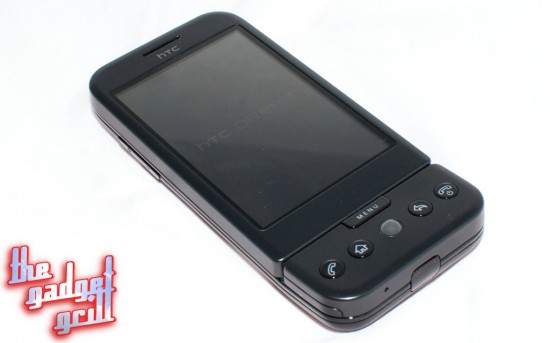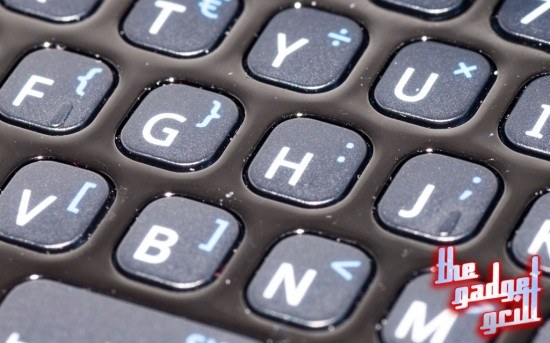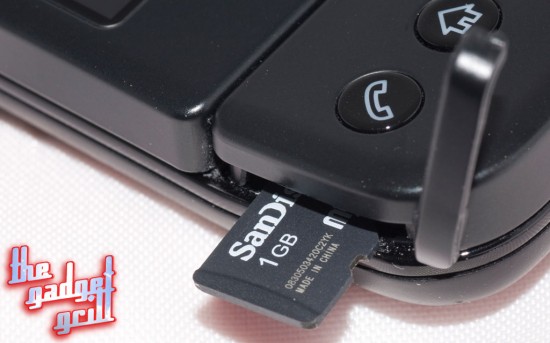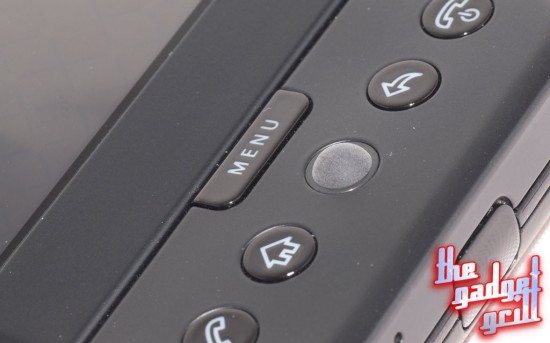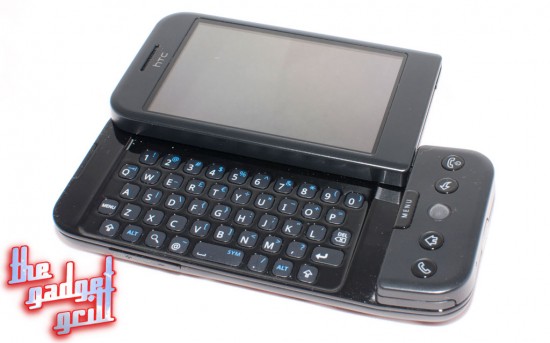Over the last week I’ve had the pleasure of reviewing the HTC Touch Dream mobile phone. Yes, this is the one powered by Google’s Android operating system.
And using Optus as the cellular carrier. More on that later; first up, the phone.
As a note, the other reviewer here – Leigh – will occasionally jump in and saw a few words too. His comments will be in italics to try to help the flow of this article remain the same.
It’s a quite handsome unit, with a good solid feel, and a nice matte black finish. It feels very comfortable in the hand and is quite responsive too. The screen, just a nudge smaller than that of the iPhone, is nice and clear, which is perfect for an old codger like me who likes things when they’re easy to read. Screen resolution, colour and brightness are all very good.
So far, the first impressions are very good.
Unfortunately, those initial impressions are soured a little by what I consider to be some very poor design decisions. I don’t know if all of these issues are Android or HTC bound, but they do take some gloss off what is otherwise a very nice little unit.
So, what are those niggles?
First off, and a glaringly ugly issue, is the fact that, with the exception of the dialer, there is no on-screen keyboard. The problem here is that in order to enter anything at all into any sort of a form, you are forced to use the hidden hardware keyboard, with its tiny keys, and even tinier key legends. If you’re browsing, or looking at maps, or checking your email, and doing this with the unit in portrait orientation, you need to engage the keyboard, which you do by pushing the screen up. In landscape orientation.
This becomes tiresome very quickly. But because the keys’ legends are so small, and because the backlighting is very dim, it becomes a major issue in anything but the best of lighting conditions. If you have minor issues with eyesight – like those that are typical as you get into your mid-forties and beyond – then it makes the keyboard very difficult to use.
Leigh: I don’t quite agree with the keys being terribly small as I’ve found this to be fairly common on modern devices. However, I do agree that it’s a little pointless to have a portrait view but missing a way of typing in data when that portrait view is so useful to have. Likewise, I agree that the backlighting on the keys is very poor. In my testing, I found the backlight turned itself on when I had light and turned itself off when I didn’t. I experienced this while I was in a taxi and traveling through a tunnel which made the entire process of writing a text message a little moot.
In its default mode, the means by which the Dream can be engaged is too easily activated. I found that it was able to be engaged while it was sitting in my pocket and being bumped by other items in there. Simply moving the screen from its at-rest position had exactly the same effect. This would happen while I was just trying to grab the phone in my pocket. I would strongly recommend that you access the phone’s settings and set up your own finger pattern unlock code. This is not a difficult task, and I think that this should probably be amongst the unit’s default settings.
Battery life was not all that good. With GPS, GTalk and EMail all operating, the battery could die within maybe 12 or 14 hours. Kill some of those services, and you can expect to extend the battery’s useful life, but what’s the use of an all-singing, all-dancing device if you have stick a sock in its mouth to stop it singing, and remove its tap shoes to stop it dancing, just so that you can use it for maybe a whole busy day? I would count on recharging this overnight, every night.
Leigh: Once again, I agree. I tested it without GPS and found that with Google IM (GTalk), e-mail, and Twitter constantly connected gave me a total of 12.5 hours of life without even making a phone call. A lot of people may say that the Apple iPhone has a bad battery life, but that’s nothing compared to this. The HTC Dream has downright pathetic battery life and I suspect that if you use its connectivity, GPS, and make phone calls – you know, like a regular person – you’ll need to charge it twice daily.
Another design deficiency is the absence of A2DP functionality. This is a new device, with a brand new operating system, and a brand new design. It is touted as being an iPhone killer. The fact that they started with a fresh piece of paper, but came up with no A2DP shows, for me, an appalling failure in the basic design of this unit. The absence of A2DP on the iPhone should not be used as a crutch on the Dream; rather the Dream should be capitalising on this failing on Apple’s part and boasting of its prowess. Instead, both phones are sadly deficient.
To connect external speakers or a headset of any kind, you need to use the mini-USB connector, rather than an industry standard 3.5mm stereo jack. Why do manufacturers do silly things like this? I have perfectly good – damn good, in fact – headphones that use a standard interface. I don’t want to use a crappy set of el-cheapo proprietary earbuds that don’t sound anywhere near as good as anything that I might already have, and that constantly fall out of my ears.
While I’m ranting, a word now about web browsing and functionality on the Dream. The review unit came with an Optus connection, and that was problematic. Severely so. It’s been a very long time – maybe eight years or more – since I’ve used dial-up internet. Yet the performance of the Optus wireless broadband network didn’t even match my recollection of how bad dial-up was. I have never seen so many dropped connections when trying to browse to a web page. Ever.
I was sitting in a small eatery in Glebe, maybe a mile or so from the centre of Sydney, Australia’s largest city. I was next to a window in that eatery, but do you think I could do anything in terms of browsing? No way! Leigh was sitting next to me, and getting to the same sites Optus was dropping out on, with no issues, using a Telstra connected phone. But I would be sitting there, waiting vainly for the ship to come in. Afterwards, outside, on Glebe Point Road, surely one could get some sort of reasonable performance? Not from Optus!
Perhaps it was a bad night? That’s not been our experience. One week later, we are still seeing significant dropouts. There has not been what I would call a significant improvement.
Disgraceful, Optus, disgraceful. Are you charging your customers for this? How is this conscionable?
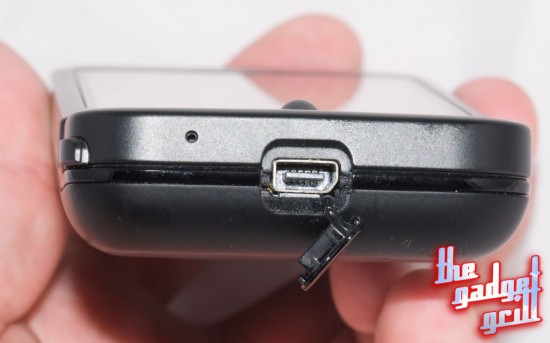
The USB port is your only way of connecting headphones. Quick question... how many headphones have USB ports on them?
Let’s get to the good stuff: it’s a very nice phone, very usable, with a basically nice and friendly user interface. Email was easy to set up, both for GMail, as well as for my own private email. Apart from the Optus issues noted above, browsing was a breeze.
I was easily able to go to sites such as those where my email and websites are configured, and even access and adjust the settings if I so desired. Interestingly, on one of those sites, where Google ads are enabled, none of those ads were visible on the Dream. While the site owners and advertisers might not agree, I thought that this was rather a nice fringe benefit.
The music player worked as well as could be expected, save for the absence of A2DP. Playback through the built-in speaker was harsh sounding, as you would expect. External speakers or ear-buds can be used, but they must, as I’ve noted above, be connected through the mini-usb connector. The absence of A2DP precludes the use of something like the Altec Lansing SoundBlade, which is a shame. Please note that the SoundBlade may still be used as a hands free speaker phone with the Dream, but that would be crippling the Blade due to the Dream’s deficiencies.
Leigh: It’s also probably worth noting here that the media player supports music, but not movies or videos.
Google’s own GTalk instant messaging service is well integrated into the phone, and was dead easy to set up and use too, but please see my earlier comments regarding battery life.
There is an ever-increasing list of third party applications available for the Android platform, and this only adds to the functionality of the Dream.
In summing up, I think that the Dream is an almost good PDA/Phone, let down by some poor design decisions. Fix the issues that I’ve identified, and I think that the Dream could well be a contender to the iPhone’s mantle of top dog.
Leigh: I too thought this phone was actually pretty cool. I got used to the convergence and the whole “being connected on Google” constantly which is something I’m always using. I loved how I could always log in to my calendar, check my email, talk to my friends, and do everything else I normally could go with Google’s services but away from my desktop. The way you’re always connected to Google is one of those simply brilliant features of Google’s Android OS. But the poor battery life and lack of portrait input made the HTC Dream feel like it still needed a lot of work. I love parts of this phone, but I think it still needs some fixing before it can claim a top spot in my mind.
Gary’s Rating: 




Leigh’s Rating: 




Product: HTC Dream
RRP: $899

